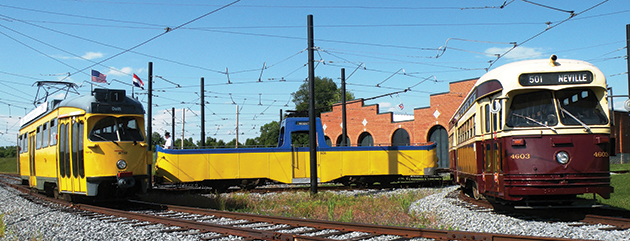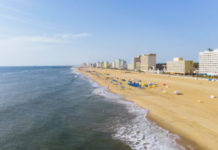
If you thought the National Capital Trolley Museum was a simple collection of dusty old streetcars from a bygone era, consider this dead-on assessment from a reviewer on yelp.com: “Trolleys! Who knew they could be so much fun!”
Indeed, a visit to the relocated and rejuvenated museum in Colesville is an unexpectedly fun and educating experience. Visitors of all ages will enjoy the 10-minute, rocky, creaky and squeaky, out and back, two-mile loop through the forest that one of three trolleys makes every 20 minutes. It’s a civilized ride compared to riding in a packed Red Line train during the summer rush hour.
The Metro’s Red Line has been a major part of Montgomery County’s public transportation system since 1978, but long before SmarTrip cards, doors-closing chimes and off-peak fares became part of the everyday subway commuting vernacular, streetcars played a big part in county travel. Steel trestles and overhead electrical wires have since given way to Metro stops and six lanes of Rockville Pike, but trolleys once linked Washington with Cabin John, Glen Echo, Silver Spring, Kensington and as far north as Rockville.
The Rockville line, operated by the Washington and Rockville Electric Railway Company, ran up Wisconsin Avenue to Bethesda, then jogged left to Old Georgetown Road before veering into thick forest west of Georgetown Prep as it headed back to Rockville Pike at Montrose on its way to the county seat in Rockville, 10.4 miles from the District line. As automobiles and buses rose in popularity and availability, trolleys began their descent into the history books and by 1935, they were pretty much gone from Montgomery County.
In cooperation with the Maryland National Capital Park and Planning Commission, the National Capital Trolley Museum celebrates the trolley era in Montgomery County as well as its more extensive and longer run in Washington, D.C. The switch from horse-drawn carriages and coaches to electric power around 1888 ushered in the trolley era in Washington, which lasted until 1962.
The red brick buildings of the museum, which was relocated not far from its original site due to construction of the Intercounty Connector, have the feel of a train station. The Main Hall houses the history of the trolleys, with maps and exhibits explaining how Washington and the Maryland and Virginia suburbs were connected by different trolley lines. Conduit Hall showcases a few of the items used to power the trolleys.
Street Car Hall, which houses street cars from the U.S., Europe and Canada, is probably the most interesting, especially since docents lead the tours and explain the history and background of each car. Of note is car No. 606 from the Blackpool Transit System built in 1934. Known as the “boat car,” the open-topped car looks like it could exit the tracks and motor across open water. The streamlined design, however, was for the safety of passengers and the conductor.
The National Capital Trolley Museum welcomes field trips and private groups and has a private room for birthday parties. The room rents for two hours and costs $100.
National Capital
Trolley Museum
1313 Bonifant Rd
Colesville, MD 20905
301.384.6088
www.dctrolley.org
Hours:
T-F: 10 a.m. – 2 p.m.
(spring, summer and fall)
S-S: 12 p.m.- 5 p.m.
Admission:
$7 for museum and unlimited trolley rides
$5 for youths and seniors
$4 museum only




